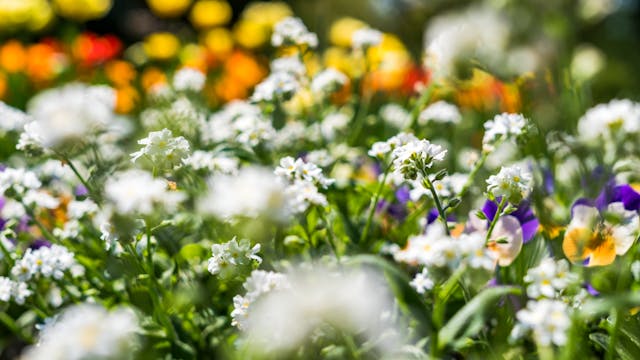Gardening is a practice as ancient as humanity itself, where the cultivation of beauty meets the practical necessity of tending the Earth. In the pursuit of creating and maintaining vibrant flower beds, gardeners often find themselves in battle with an age-old adversary: weeds.
These uninvited guests can choke out tender blooms, sapping nutrients and sunlight essential for growth. While reaching for weed killer might seem like the most effective countermeasure, its application requires a mindful approach to ensure the health and beauty of your flower beds are preserved.
Here lies the essence of our discussion today: the dos and don’ts of using weed killer for flower beds.
Do Identify the Weeds
Not all weed killers are universal. Some are selective and target specific plant types without harming others. Before applying any herbicide, identify the weeds infesting your garden. This knowledge enables you to choose a product that will be effective without causing unintended harm to your flowers.
Do Choose the Right Time
Timing is key when applying weed killer. Early morning or late evening is ideal when the sun is not at its peak. This prevents the weed killer from evaporating too quickly and ensures it has enough time to penetrate the weeds.
A calm day without wind minimizes the risk of spray drift that could harm nearby desirable plants.
Do Apply With Precision
Use a targeted applicator or shield to ensure the weed killer is applied directly to the weeds, avoiding contact with your flowers. Precision application minimizes the risk of causing unintended damage to the plants you’re trying to protect.
Do Seek Expert Help
If you’re unsure about applying weed killer, it’s best to seek the help of a professional. Experienced gardeners or lawn care companies can provide guidance on which products to use and proper application techniques.
Make sure to visit https://greenlifepropertyservice.com for expert help with lawn care and weed control. They also have environmental considerations in mind, so you can trust that they will use safe and effective methods to keep your lawn healthy and weed-free.
Don’t Overapply
More isn’t always better. Using more weed killer than recommended can harm your flowers, the soil, and the local ecosystem. Stick to the recommended application rate on the product label. This not only ensures the safety of your garden but also prevents unnecessary chemical runoff.
Don’t Ignore Weather Forecasts
Before applying weed killer, check the weather. Rain shortly after application can wash the herbicide away, reducing its effectiveness against weeds and potentially harming aquatic life through runoff. Similarly, high temperatures following application can increase the volatility of the product.
This is risking damage to nearby plants.
Don’t Neglect Personal Safety
Wear long sleeves, pants, gloves, and eye protection when applying weed killer. Some products can cause skin irritation or even more severe health issues if absorbed through the skin. Also, be sure to wash your hands thoroughly after use.
Explore the Weed Killer for Flower Beds Today
In conclusion, while the allure of a weed-free flower bed is strong, the use of a chemical weed killer for flower beds demands a responsible approach. To safeguard the health of your flower beds – and by extension, the broader environment – it is crucial to apply these products with care and judiciousness.
By adhering to these six dos and don’ts, you ensure the flourishing of your garden and contribute to the planet’s well-being. Gardening, after all, is not just about cultivating plants, but stewardship of the Earth itself.
Did you find this article helpful? Check out the rest of our blogs!










